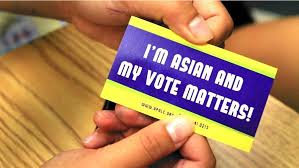Importance of the Asian Vote

March 2, 2020
Asian-Americans are the fastest growing population group in the United States, with a number of eligible voters increasing by about 150,000 each year. At one time minor players, Asian-Americans now adapt to a larger role in the political process.
In the year 2000, the state of Virginia voted primarily republican for all major public offices. Over the next 20 years the state’s Asian population increased by 125%. Now, all public offices are held by democrats, according to “The New York Times.”
Despite proving the power of their vote, 51% of Asian-Americans eligible to vote did not vote in the last election. Asians usually have the lowest voter turnout of any racial group, according to Pew Research Center. This does not mean that Asians don’t care, however it does mean politicians simply do not reach out to Asian voters. This creates a real “chicken or the egg” situation. The community won’t turnout unless politicians reach out, but politicians won’t reach out until they see a voter turnout.
In 2017, Andrew Yang broke new ground as one of the first prominent Asian-American candidates for the presidency. He hoped to be a solution to this “chicken or egg” situation. However, the media looked past the majority of his campaign, often leaving Yang off of graphics and polls. MSNBC once referred to Yang as “John Yang” in a title card. During the debates Yang received the least amount of speaking time, according to “The New York Times.”
A media blackout of an Asian presidential candidate and low Asian voter outreach is not enough to hide the community’s strength. Keep in mind, the capital of the Confederacy was flipped blue because of the Asian vote.